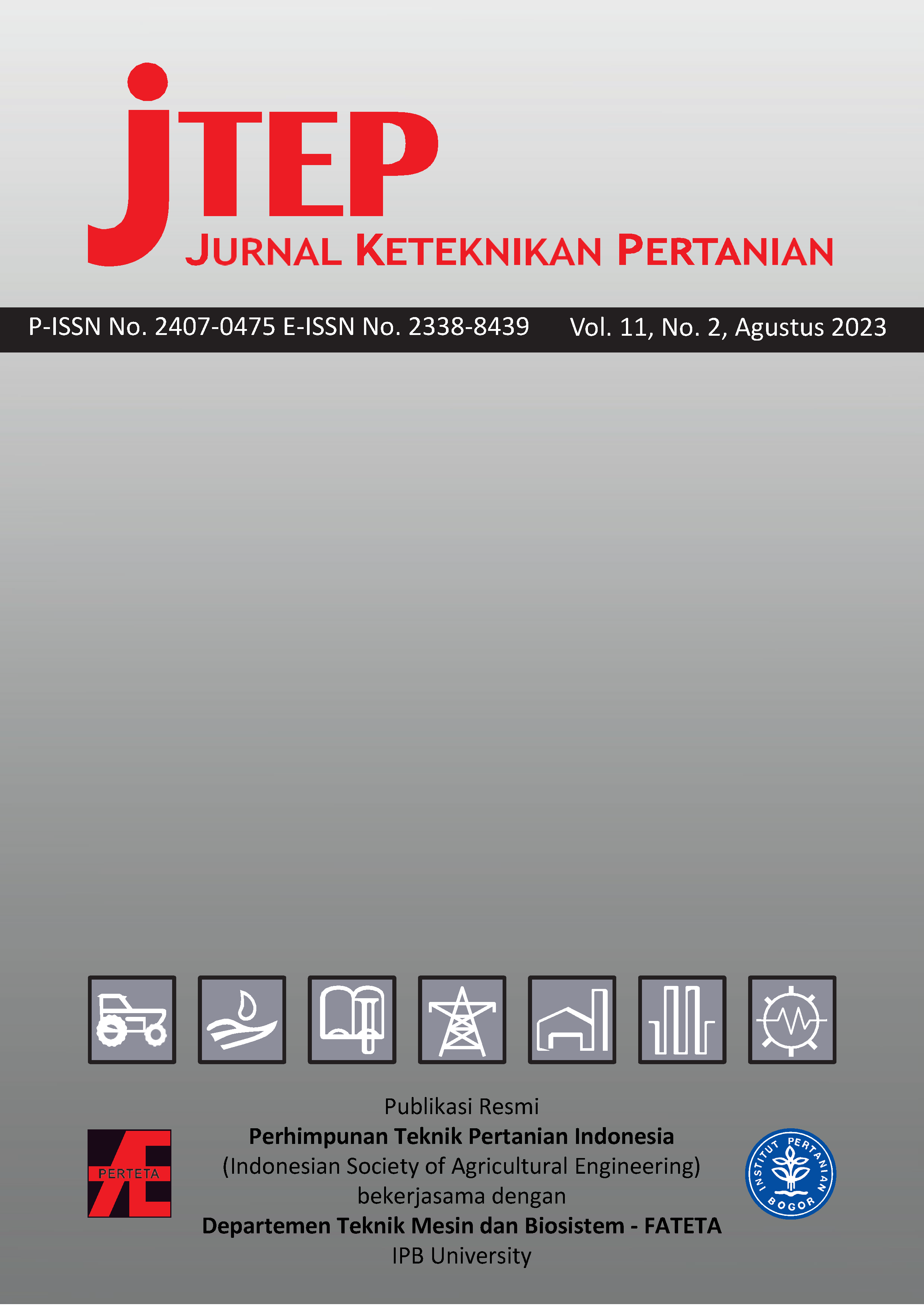Sifat Fisik dan Sifat Kimia Kertas Berbahan Baku Pelepah Kelapa Sawit (Elaeis guineensis Jacq.) Manufacture of paper material from oil palm fronds
Abstract
Oil palm (Elaeis guineensis, Jack) is a source of income for millions of farming families, a source of foreign exchange, a provider of employment, as well as a driver for the growth and development of downstream palm oil-based industries in Indonesia. Oil palm fronds are solid waste originating from oil palm plantations. Paper is a thin material that is produced by compressing the fibers derived from the pulp. The process of making pulp is by separating lignin compounds to get cellulose fibers from wood. This study aims to utilize palm fronds to be used in making paper according to SNI. The stages of this research were chopping, washing, boiling, soaking NaOH, soaking H2O2, grinding, adding talcum, molding and drying in an oven at 75 0C, 80 0C, 85 0C. As many as 64% of panelists stated that the paper produced with a drying temperature of 75 0C was white while at 80 0C as many as 62% of panelists stated that the paper produced was white and at 85 0C as many as 56% stated that the paper was white and in accordance with SNI 4733 The texture of the paper produced at a drying temperature of 75 0C was 76% of the panelists who stated that the resulting paper had a smooth texture while at 80 0C there were 66% who stated that the texture of the paper was smooth and at 85 0C as many as 62% stated the texture of the paper was smooth and according to SNI 0439 The water content of the paper produced at a drying temperature of 75 0C obtained an average of 1.9%, at 80 0C it was only 1.8% and with a drying temperature of 85 0C a high moisture content was obtained, namely 1.6%, but this result is still in accordance with SNI 0439, namely the maximum 2%. The average grammage value of paper produced at a drying temperature of 75 0C is 76.1 g/m2, at a temperature of 80 0C it is 79.9 g/m2 and at a drying temperature of 85 0C it is 85.3 g/m2 where this value is still in accordance with SNI 0439, namely a minimum of 50 g/m2
Authors

This work is licensed under a Creative Commons Attribution-ShareAlike 4.0 International License.
Authors submitting manuscripts should understand and agree that copyright of manuscripts of the article shall be assigned/transferred to Jurnal Keteknikan Pertanian. This work is licensed under a Creative Commons Attribution-ShareAlike 4.0 International License (CC BY-SA) where Authors and Readers can copy and redistribute the material in any medium or format, as well as remix, transform, and build upon the material for any purpose, but they must give appropriate credit (cite to the article or content), provide a link to the license, and indicate if changes were made. If you remix, transform, or build upon the material, you must distribute your contributions under the same license as the original.

